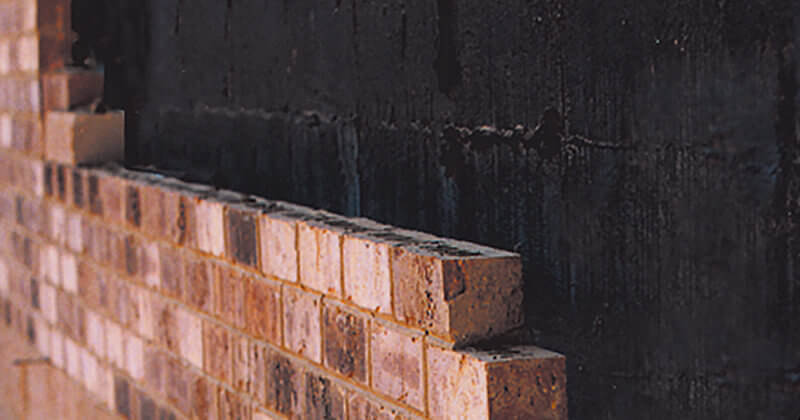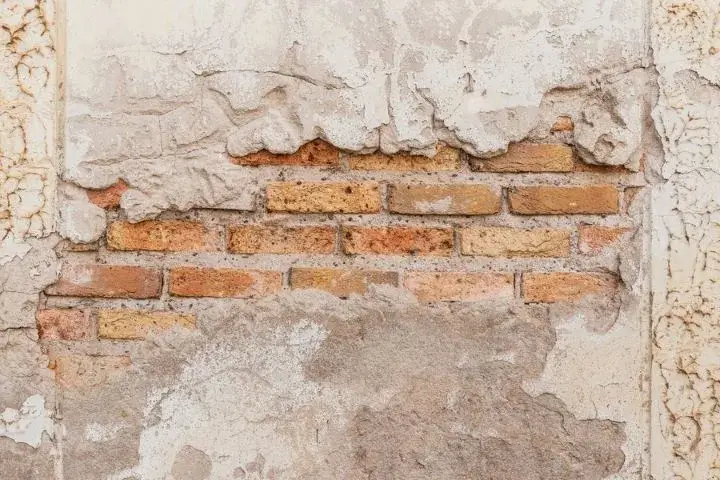Landlord's checklist to damp proofing newcastle solutions
Checking Out the Different Strategies and Solutions for Effective Damp Proofing
Moisture in buildings positions considerable difficulties to both architectural integrity and interior air top quality. Different techniques and remedies have arised to combat this pervasive concern. From traditional damp-proof membranes to innovative chemical treatments, each technique uses special advantages. Understanding these options is important for reliable dampness control. Nonetheless, choosing the right solution depends upon details building problems and needs, motivating additional exploration into one of the most reliable wet proofing methods available.
Understanding the Reasons For Wetness
Although dampness can occur from different resources, recognizing these causes is essential for reliable remediation. Frequently, dampness originates from three primary sources: climbing moist, penetrating wet, and condensation. Rising moist occurs when groundwater travels up through permeable products, such as block or rock, typically because of a lack of a reliable obstacle (damp specialist newcastle). Permeating moist is generally triggered by exterior factors, including roof covering leaks, malfunctioning seamless gutters, or damaged walls, allowing water to infiltrate a home. Condensation, on the various other hand, results from excess moisture airborne, usually worsened by bad ventilation and temperature level distinctions, resulting in water droplets basing on surfaces. Identifying these underlying issues is crucial, as each type of wetness requires a tailored technique for remediation. Correct assessment helps in identifying the most reliable solutions, ultimately guarding the architectural integrity of a structure and improving indoor air top quality
Standard Damp-Proof Membranes

Chemical Damp-Proofing Solutions
Chemical damp-proofing services use a cutting-edge approach to stop moisture breach in structures. These techniques generally entail the application of fluid chemicals that pass through masonry and form a barrier against rising wet. Generally used chemicals consist of silanes, siloxanes, and other water-repellent representatives that respond with surface products to develop a hydrophobic layer.The application process usually requires drilling openings into the wall surfaces, injecting the chemical remedy, and allowing it to treat. This approach is especially advantageous for older structures where traditional damp-proof membrane layers might be unwise. Chemical damp-proofing can be less turbulent and extra cost-effective than considerable remodelling projects.While reliable, these remedies depend on appropriate application and ecological problems for peak efficiency. mould treatment newcastle. Routine upkeep and tracking are vital to guarantee the longevity of the damp-proofing therapy. In general, chemical damp-proofing stands for a functional option for guarding buildings against moisture-related damage
Dental Caries Wall Construction Techniques
Tooth cavity wall surface building techniques offer various advantages, specifically in moisture control and energy performance. By including an air gap between two layers of stonework, these wall surfaces effectively minimize water ingress while enhancing insulation. This combination not only shields frameworks from dampness however also contributes to decreased energy consumption.
Advantages of Cavity Walls
When considering reliable wet proofing approaches, the advantages of tooth cavity walls attract attention prominently. Tooth cavity wall surfaces contain 2 separate layers, creating an air space that properly reduces moisture penetration. This style lessens the risk of dampness, as the outer wall surface functions as a barrier versus rainfall and water access. In addition, tooth cavity wall surfaces improve thermal insulation, which adds to power efficiency by minimizing warm loss. They additionally provide audio insulation, helping to develop a quieter interior environment. In addition, the air space enables for air flow, which assists in moisture control and decreases the chance of mold development. These advantages not only enhance the total comfort of a structure yet likewise add to its long life and structural honesty.
Wetness Control Techniques
Effective wetness control methods are crucial in dental caries wall surface construction to assure long-term security versus dampness. One primary approach includes the consolidation of weep openings, which facilitate water drainage from the dental caries, preventing buildup. Furthermore, making use of breathable membranes can aid manage wetness levels while allowing caught vapor to escape. Appropriate placement of insulation is also critical, as it needs to not obstruct drainage paths. Furthermore, making sure that the external leaves of the dental caries wall are built with waterproof products enhances total sturdiness. Normal upkeep checks are essential to determine any kind of obstructions or damages early, guarding the structure's stability. Ultimately, a combination of these techniques develops a durable protection versus moisture breach in tooth cavity walls.
Insulation and Energy Effectiveness
Insulation plays a crucial role in enhancing energy efficiency within cavity wall surface building and construction. By integrating shielding materials, these walls develop a thermal barrier that decreases warm loss and reduces power intake. Efficient insulation not only helps maintain a steady interior temperature level yet also minimizes the risk of moisture, as it protects against condensation within the wall surface dental caries. Different strategies, such as using stiff foam boards or mineral woollen, can be utilized to achieve excellent insulation performance. In addition, proper installation is vital to assure that spaces and spaces are lessened, which can otherwise jeopardize energy effectiveness. Eventually, a well-insulated dental caries wall adds considerably to general sustainability and decreases heating & cooling expenses for home owners.
Exterior Damp Proofing Techniques
Exterior damp proofing approaches are essential for shielding structures from moisture infiltration. Two efficient strategies consist of the application of waterproof membrane layers and the setup of French drains pipes. These solutions assist minimize water build-up and preserve the honesty of structures.
Waterproof Membrane Application
While various methods exist for preventing moisture access, the application of water-proof membrane layers continues to be a highly effective exterior moist proofing strategy. These membranes are generally made from products such as polyethylene, rubber, or customized bitumen, giving a robust barrier against water penetration. The installment procedure includes applying the membrane layer to the exterior surface areas of foundations or wall surfaces, making certain full insurance coverage to avoid leakages. Proper attachment and sealing at joints are critical to making the most of effectiveness. Waterproof membranes can be used in different types, including fluid finishes and sheet membranes, enabling flexibility based on the particular needs of the framework. This technique not only secures buildings from moisture but also improves their durability and architectural stability.
French Drainpipe Installation
One efficient method for taking care of groundwater and protecting against moisture buildup around a structure's foundation is the setup of a French drain. This drainage system is composed of a trench full of gravel and a perforated pipeline that reroutes surface water far from the structure. Proper installment calls for cautious preparation, making certain that the drainpipe slopes far from the framework to assist in suitable water circulation. Furthermore, the location of the drain is important; it must be placed in locations prone to merging or excess moisture. Normal upkeep, consisting of cleaning particles from the gravel and making certain the pipeline stays unhampered, is vital for long-lasting performance. Ultimately, a well-installed French drainpipe can substantially lower the threat of water-related problems in cellars and structures.
Interior Waterproofing Approaches
Inside waterproofing methods are vital for protecting a building's interior from wetness seepage and possible water damage. These strategies generally include the application of specialized materials and strategies made to develop a moisture barrier within the framework. One common method is using water resistant finishes or sealers on walls and floors, which stop moisture from passing through surfaces.Additionally, installing interior drainage systems, such as sump pumps, can successfully handle water buildup in cellars and creep areas. Another approach includes the use of vapor obstacles, which are installed to inhibit moisture motion from the ground right into living spaces.Moreover, dealing with any fractures or spaces in wall surfaces or structures with ideal sealers guarantees a comprehensive protection versus water breach. By carrying out these interior waterproofing approaches, homeowner can substantially reduce the risk of mold and mildew growth, structural damage, and various other moisture-related issues. Correct execution of these techniques is crucial for lasting defense and building stability.
Normal Maintenance and Evaluation Practices
Routine maintenance and evaluation methods are crucial for ensuring the lasting efficiency of wet proofing options in any type of building. Regular checks make it possible for building owners to recognize very early signs of wetness intrusion, such as peeling paint, mold and mildew development, and musty odors. These signs can indicate underlying concerns that call for instant attention.Inspections must be performed a minimum of yearly, concentrating on at risk areas like basements, creep areas, and outside wall surfaces. Throughout these analyses, homeowner must analyze sealants, drainage systems, and air flow to validate they work correctly.Additionally, keeping seamless gutters and downspouts is necessary, as blocked systems can cause water accumulation near the foundation. Implementing a normal upkeep schedule, along with timely repair services, can considerably extend the life-span of moist proofing steps and shield the architectural honesty of the structure. website Positive procedures eventually add to the total health and wellness of the living atmosphere.
Frequently Asked Concerns
How Much Time Does Damp Proofing Commonly Last?
The period of damp proofing performance varies, normally lasting in between 20 to half a century. Aspects such as application high quality, ecological problems, and maintenance techniques significantly influence the longevity of the wet proofing treatment.

Can I Damp Evidence My Home Myself?
The private contemplated the feasibility of do it yourself damp proofing. With proper research and the best products, it is feasible. They likewise identified the value of expert support to guarantee lasting performance and prevent future issues.
What Are the Indications of Ineffective Damp Proofing?
Indicators of inefficient moist proofing include relentless musty smells, noticeable mold development, peeling paint, damp spots on walls, and timber degeneration - mould removal newcastle. Home owners ought to attend to these concerns without delay to protect against additional damage and health and wellness issues
Does Damp Proofing Affect Indoor Air High Quality?

Just How Much Does Specialist Damp Proofing Price?
Expert damp proofing prices vary significantly, usually ranging from $1,000 to $5,000 depending on the home's size, the degree of the wet issue, and chosen approaches. Each circumstance needs a customized assessment for accurate rates. Frequently, moisture stems from 3 main resources: climbing moist, passing through wet, and condensation. When taking into consideration efficient damp proofing methods, the benefits of tooth cavity wall surfaces stand out prominently. Exterior wet proofing techniques are crucial for securing structures from moisture infiltration. While various techniques exist for stopping dampness ingress, the application of water-proof membranes remains an extremely efficient outside damp proofing strategy. Indications of ineffective moist proofing include consistent moldy smells, noticeable mold growth, peeling off paint, moist patches on walls, and wood decay.